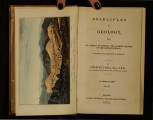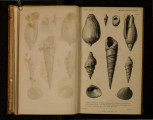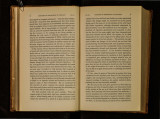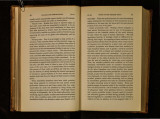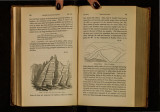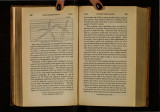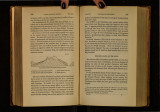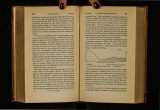| OCR Text |
Show 254 EOCENE PERIOD. [Ch. XVIII. wide geographical range, as, for example, Lucina di·varicata, and are therefore fitted to exist under a great variety of cir. cumstances. On the other hand, the great proportion of the Eocene marine testacea which have become extinct sufficiently demonstrates that the loss of species has been due to general Jaws, and that a sudden catastrophe, such as the invasion of a whole continent by the sea-a cause which could only annihilate the terrestrial and fresh-water tribes, is an hypothesis wholly inadequate to account for the phenomenon. St,rata with and without organic remains alternating.-Between the gypsum of the Paris basin and the upper marine sands a thin bed of oysters is found, which is spread over a remarkably wide area. From the manner in which they lie, it is inferred that they did not grow on the spot, but that some current swept them away from a bed of oysters formed in some other part of the bay. The strata of sand which immediately repose on the oyster-bed are quite destitute of organic remains ; and nothing is more common in the Paris basin and in other formations, than alternations of shelly beds with others entirely devoid of them. The temporary extinction and renewal of animal life at successive periods have been inferred from such phenomena, which may nevertheless be explained, as M. Prevost justly remarks, without appealing to any such extraordinary revolutions in the state of the animate creation. A current one day scoops out a channel in a bed of shelly sand and mud, and the next day, by a slight alteration of its course, ceases to prey upon the same bank. It may then become charcred with sand unmixed with shells, derived from some dune, b . or brought down by a river. In the course of ages an m~ definite number of transitions from shelly strata to those with· out shells may thus be caused. · Concluding remarks.-lt will be seen by our observations on Auvercrne and other parts of Central France, and on the 0 • district round Paris, that geologists have already gamed a con· siderable insi<rht into the state of the physical geogtaphy of 0 • part of Europe dtuing the Eocene period. We can pomt to Ch. XVIII.] PARIS BASIN. 255 some districts where lakes and rivers then existed, and to the site of some of the lands encircling those lakes, and to the position of a great bay of the sea~ into which their surplus waters were discharged. We can also show, as we shall endeavour to explain in the next chapter, the points where some volcanic eruptions took place. We have ~cquired much information respecting th.e quadrupeds which inhabited the land at that period, and concerning the reptiles, fishes, and testacea which swarmed in the waters of lakes and rivers; and we have a collection of the marine Eocene shells more complete than has yet been obtained from any existing sea of equal extent in Europe. Nor are the contemporary fossil plants altogether unknown to us, which, like the animals, are of extinct species_, and indicate a warmer climate than that now prevailing in the same latitudes. When we reflect on the tranquil state of the earth implied by some of the lacustrine and marine deposits of this age, and consider the fullness of all the different classes of the animal kingdom, as deduced from the study of the fossil remains) we are naturally led to conclude, that the earth was at that period in a perfectly settled state, and already fitted for the habitation of man. The heat of European latitudes during the Eocene period does not seem to have been sup~rior if equal to that now experienced between the tropics; some living species of molluscous animals both of the land~ the lake, and the sea, existed when the strata of the Paris basin were formed, and the contrast in the organization of the various tribes of Eocene animals when compared to those now co-existincr witl~ man l 0 ' a though striking, is not, perhaps, so great as between the living Australian and European types. At the same time we are fully aware that we cannot reason with any confidence on tb~ capability of our own or any other contemporary species to exist under circumstances so different as those which mi()'ht be caused by an entirely new distribution of land and s:a. ~nd we know that in the earlier tertiary periods the physical |







